Originally published: May 7, 2023
Reading time: 6 mins
SEO makes sense when people use Google (or other search engines) to get a job done.
When there’s demand, there will be competitors. There’ll be no requirement for SEO without any search rivals.
But if you’re unsure about your market size, it’s difficult to establish realistic SEO goals. Hence, benchmarking competitors’ data becomes crucial to get closer to projected traffic and revenue numbers.
By the end of this blog, you’ll have answers to:
- Who are you up against? (Niche analysis)
- How to assess competitors’ traffic? (Situation analysis)
- How much traffic do you want to achieve? (Objective)
- How do you get the desired targeted traffic? (Strategy)
Let’s consider Factors.ai as an example company for competitor mapping.
Identifying Your Competitors
Not every top 10 search result will be your competitor. You’ll have to identify your real competitors.
The overlap between your business and search competitor is your actual SEO competitor.
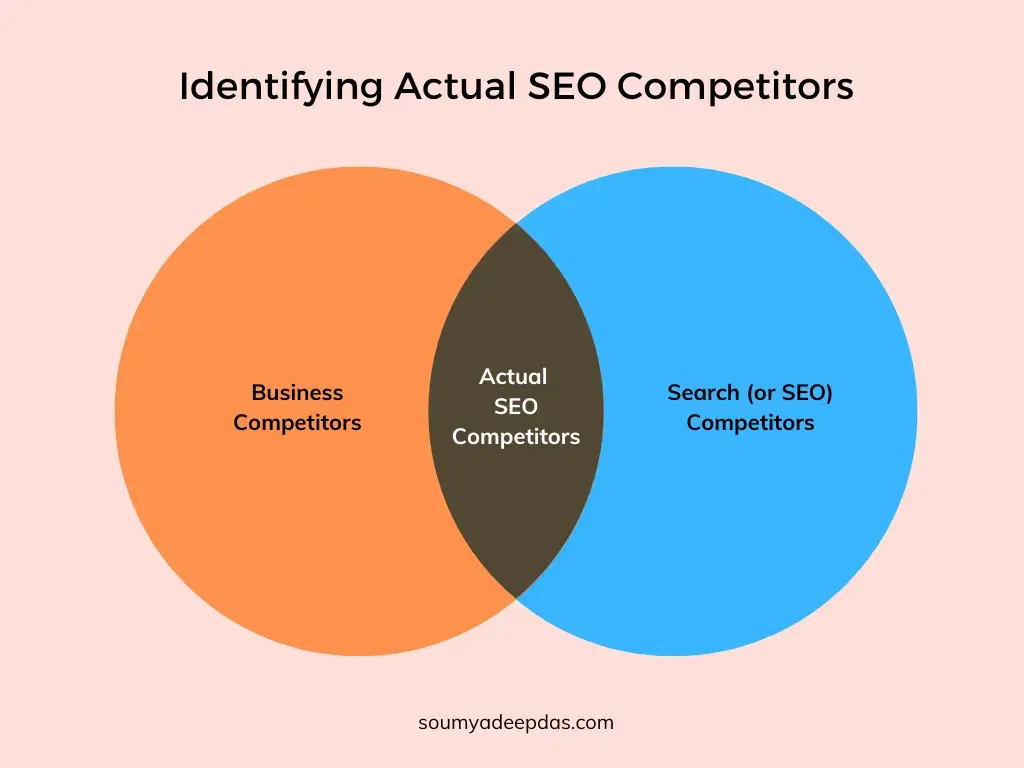
Business competitors are your direct competitors. They may or may not be competing with you in the search.
SEO or search competitors are the ones competing in search results. They may or may not have similar line of business as yours.
For Factors, following are the actual SEO competitors in visitor identification software category:
- Clearbit
- Leadinfo
- Albacross
- LeadMagic
- Leadlander
- Leadfeeder
- VisitorQueue
- Happierleads
- Lead Forensics
- KickFire (a Foundry company)
While many third-party tools provide the above data, it’s better to cross-check with the founder or product manager to avoid guesswork.
5 Key Metrics for SEO Benchmarking
Following are some important benchmarking factors you should always consider before starting your SEO campaign.
1. Indexed Pages
Page indexing is a complex process of listing your URLs on search results. Multiple steps are involved here.
URLs are not indexed instantly. When you publish a page, it takes time for crawlers (eg, Googlebot, Bingbot, etc.) to collect information and display the URL in the search engine results pages (SERPs).
More indexed pages don’t necessarily mean more traffic. But we’re considering these numbers (along with other metrics) to make informed decisions.
There are two ways to find the number of indexed pages of your competitors.
a) Using Screaming Frog
Screaming Frog (SF) is a popular site crawler generally used for detecting tech SEO issues.
It’s a sophisticated tool and takes time for beginners to learn.
Note that you will need a paid license of the SF tool to find the list of URLs. Here’s the detailed process:
b) Using Ahrefs
If you want to skip the technicalities, use Ahrefs’ Site Explorer.
Log in to your Ahrefs account → Go to Site Explorer → Enter your competitor’s domain → Under Overview, look for Crawled Pages.
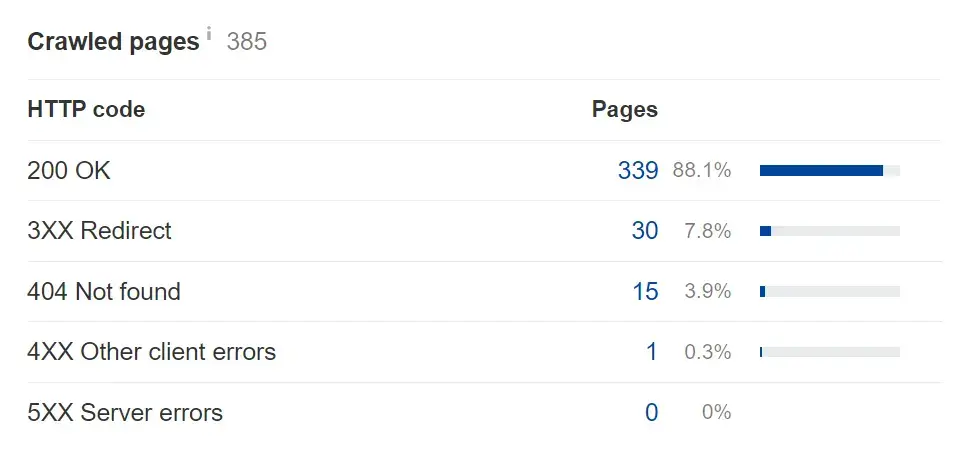
This won’t be the exact count of indexed pages. It’s more of an approximation.
2. Backlinks or Referring Domains
Whenever an external site links back to your site, it’s called a backlink. People link back because they find your content ranking higher in the SERPs for a particular query.
Unique referring links from authoritative sites indicate Google that your content is authoritative and link-worthy.
However, more links don’t mean higher rankings. Quality is more important than quantity here.
Ahrefs will extract your competitors’ backlinks data. Quality of links needs manual assessment.
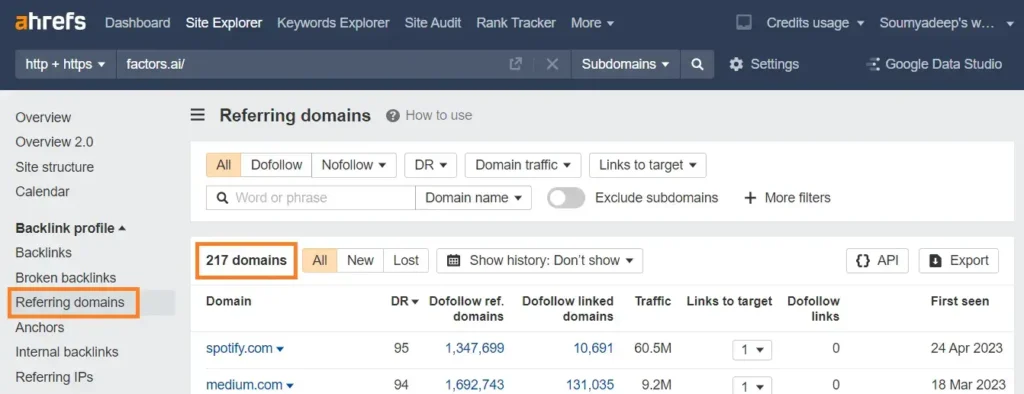
3. Total Organic Search Traffic
Users visiting your site by clicking on non-sponsored links are recorded as organic clicks. Search engine optimizers (SEOs) help you rank higher for relevant searches, without having to pay for keywords.
A look at organic traffic helps understand how your competitors value SEO as an acquisition channel. Healthy organic traffic indicates that they’re:
- thinking long-term
- getting high-quality leads
- creating high-quality content
- having a good brand presence
Now how to determine organic traffic when you don’t have access to Google Analytics or Search Console?
Try Similarweb — the data won’t be exactly accurate but it’ll give you an indicative measure. Create an account or log in to Similarweb → Select Competitive Research → Enter the site → Under Overview, select Website Performance.

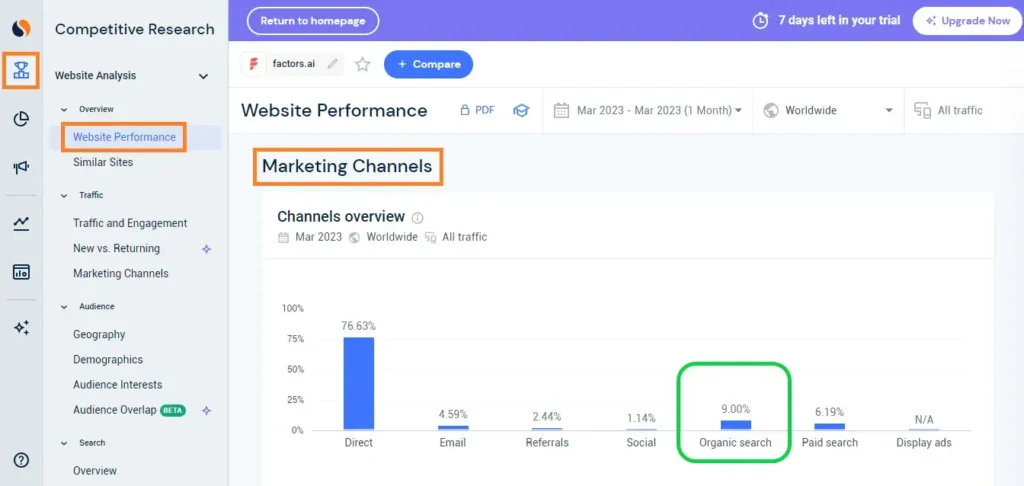
So organic traffic for Factors will be 9% of total organic visits, i.e., 9% of 26,065 = 2,346.
4. Branded Search Traffic
When users enter your exact brand name (or a query having your brand name) to reach your site, it’s branded traffic. For instance, branded terms for Factors can be:
- factors ai
- factors.ai tool
- factors ai blog
- factors ai pricing
- factors ai software
- how factors ai tool works, etc.
💡 Note: Misspelled queries won’t be considered branded. They’ll come under non-branded.
Now how do you measure branded traffic?
a) Using Similarweb
Create an account or log in to Similarweb → Select Competitive Research → Enter the site → Under Overview, select Website Performance → Organic Search.
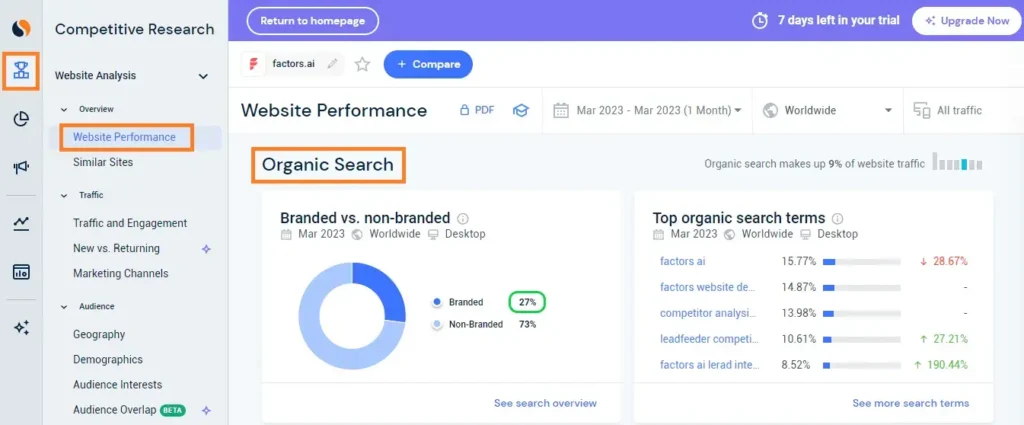
So organic branded searches for Factors will be 27% of total organic visits, i.e., 27% of 2,346 = 633.
💡 Tip: I’ve found Similarweb’s data close to Search Console’s. The differences are not absurd. But you can always cross-check with tools like SpyFu or Semrush for clarity.
b) Using Google Search Console
Google Search Console is a no-cost tool provided by Google for monitoring, maintaining, and resolving issues of your site’s visibility in Google Search results.
💡 Note: Since I don’t have access to Factors’ Search Console, will use a dummy account for demonstration purposes.
First, log in to your Search Console account. Go to Performance → New → Query.
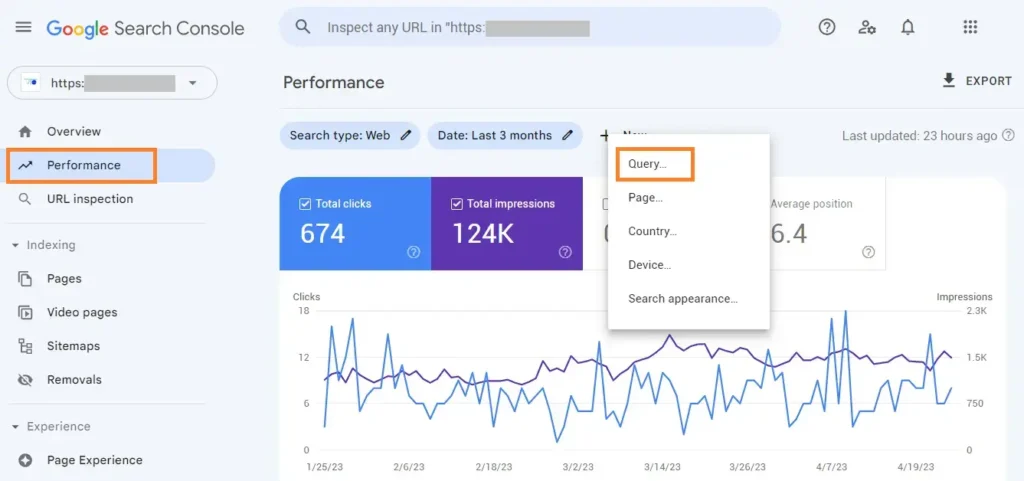
Select Queries containing → Enter the query/keyword.
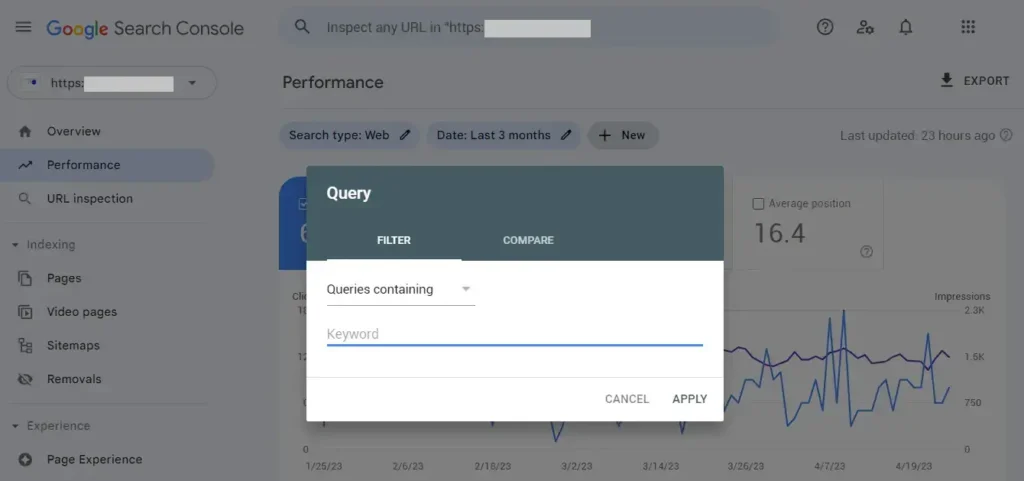
Total clicks indicate branded clicks. Here it’s 130.
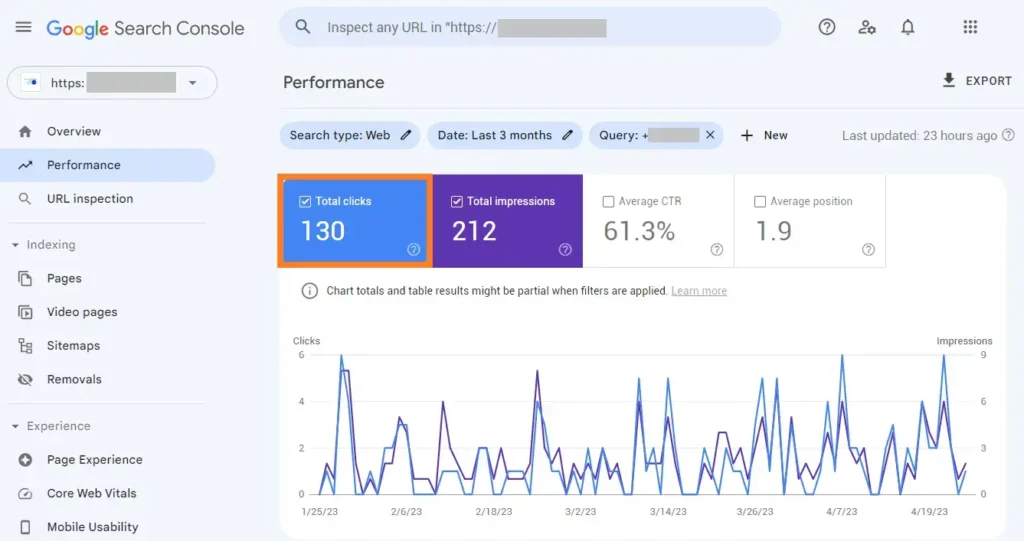
5. Non-Branded Search Traffic
When users (new or returning) discover your site without searching for your brand term on Google, it’ll be referred as non-branded traffic. It’s the true measure of SEO progress.
💡 Note: Non-branded search traffic = Total search traffic – Branded search traffic
Factors’ blog ranks organically at #3 for the query “visitor identification tools”. If a user visits the page through this query, it’ll be counted as a non-branded or discovery click.
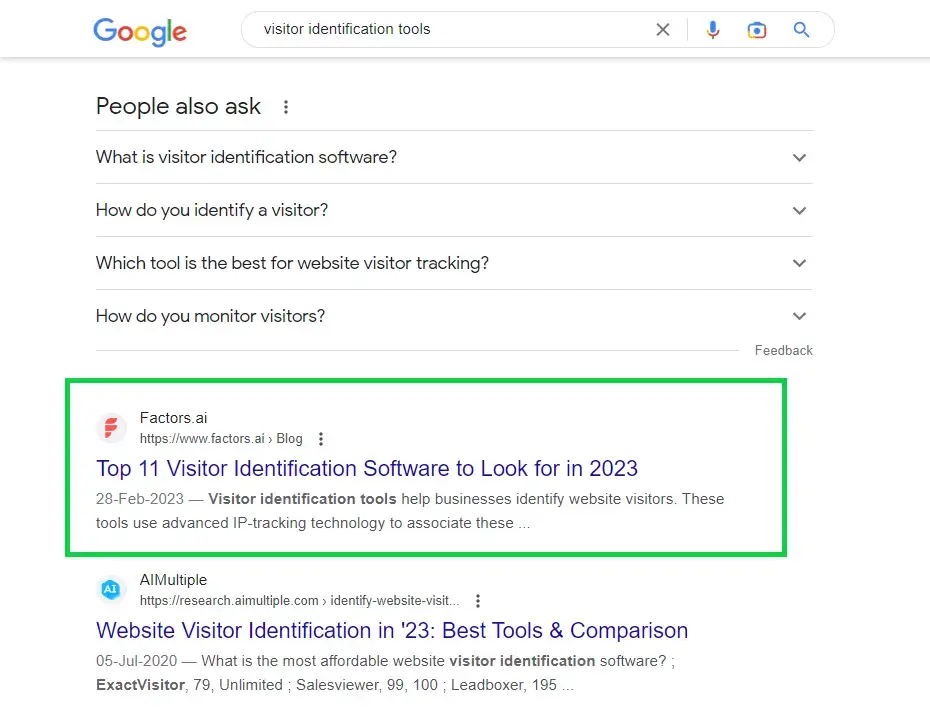
Collating the Data
Now you know how to gather data from different sources, it’s time to organize them in a sheet for better visualization.
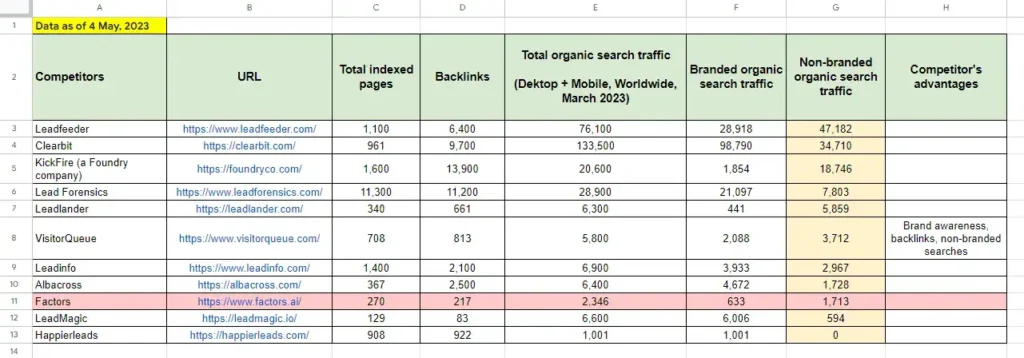
💡 Note: No tool will give you perfect data. You’ve to work with the approximations.
As you can see, I’ve sorted the cells as per non-branded organic searches (because that’s the actual measure of SEO progress).
The journey to the top starts by achieving smaller targets. If Factors wants to reach where VisitorQueue is, within 6-8 months, they’ll have to primarily allocate resources for:
- getting quality backlinks
- brand building (or digital PR)
- creating content that targets non-branded queries
To keep track, it’s best to update the figures every 3-4 months.
When SEOs come up with such analysis, they build trust among stakeholders and get more buy-ins.
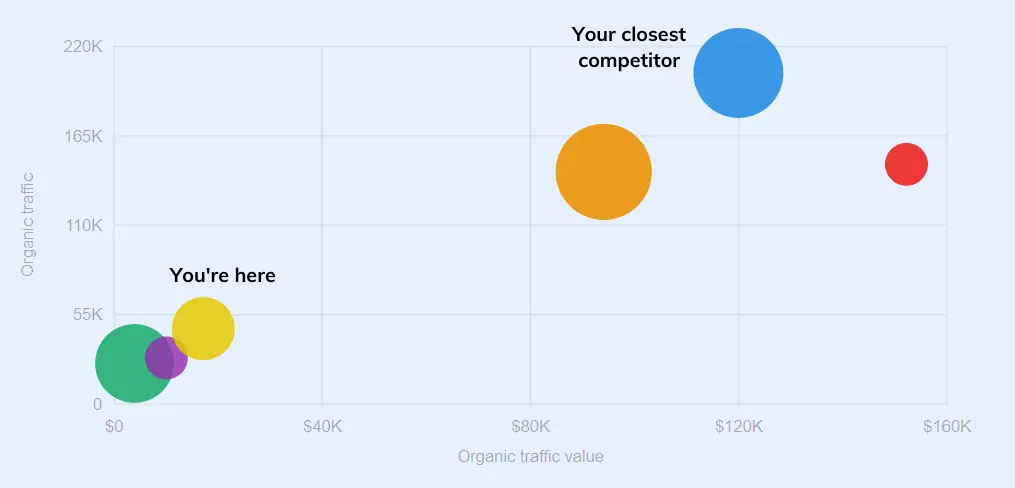

0 Comments